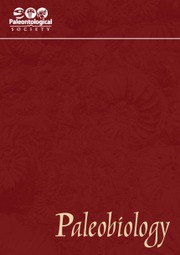Article contents
Microstructure-dictated resistance properties of some Indian dinosaur eggshells: finite element modeling
Published online by Cambridge University Press: 08 April 2016
Abstract
Finite element modeling (FEM) has been used to evaluate microstructure-controlled stability of selected eggshells of Indian dinosaurs. Our study suggests that under static load the eggshell microstructure of Megaloolithus cylindricus displays a low magnitude of tensile stress over most of the spherolith. The magnitude of this tensile stress is lower than that displayed in M. jabalpurensis, M. baghensis, and Subtiliolithus kachchhensis. In M. cylindricus, a shell thickness matching the length of the spheroliths prevents the failure of eggshells, whereas in M. jabalpurensis and M. baghensis, which have thinner shells, the development of additional subspheroliths compensates for the relatively higher magnitude of tensile stresses. Extremely thin eggshell in S. kachchhensis shows a still higher magnitude of tensile stresses, thereby making it prone to cracking, but the propagation of cracks is apparently checked and stability reinforced by wider spacing of pore canals.
- Type
- Articles
- Information
- Copyright
- Copyright © The Paleontological Society
References
Literature Cited
- 6
- Cited by


